This week's newsletter is a guest post from Peter Yee, an extract from his colourful memories of growing up in Hong Kong in the 1950s.
7.1 My Neighbourhood
Ki Lung Street was quiet with almost no car traffic during my early years in Hong Kong. It was two city blocks from the wider Lai Chi Kok Road which handled the bulk of the vehicle and pedestrian traffic.
This photo was taken from the east end (first street block) of Ki Lung Street looking west. My home was two blocks up and on the left. Although it was taken in 1965, the scene on the left side was very similar to that in 1949. The street had no parked cars on my block. By the early 1960s, taller buildings have replaced some of the pre-war shophouses as shown on the right of the photo.
On our walk-out uncovered balcony, father had a large aquarium built for his collection of tropical fish. He kept pigeons as pets at one time. He spent a long time making and improving the water-feeder for the birds, which is typical of him trying to improve whatever he was interested in. After my parents left for Canada, I continued to use the aquarium although it had developed a small leak.
There were very few private residences at ground level in my neighbourhood. Shops and restaurants were everywhere making it convenient when buying grocery and dining out. Everything we bought were fresh - meat, vegetables and fish. There were two Dai Pai Dong's few shops from us to the east, one serving assorted beef needle soups and the other hot drinks and sandwiches. Later, ice cold coffee was added to their menu when they bought a large refrigerator. One block away from our home, on Poplar Street, there was a street market.
Across the street from our balcony was a small primary school 國䧏小學 occupying levels 2-3 and the rooftop. At street level was 東如茶室 a dim-sum restaurant. Both their signs were visible from our balcony, and I always looked at them whenever I looked outside. After a while, their word-strokes got etched in my mind and never left me. Below our flat at ground level was a tin-box factory with machinery and motor-belts moving along their ceiling. And on the other side of our staircase was a bicycle shop 順安單車 where arc-welding using sticks and acetylene torch were their main business. Because of my interest in both, the young workers there became my street-friends. These business are all long gone, only memories of them remain.
There were three street scenes that, though with no significant ramifications, had a lasting impression on this boy:
Police and Fish Sellers (1952)
In the early 1950s at the Poplar Street market, street vendors operated their business on the street and removed their belongings at closing time. Fruit and vegetable vendors were mainly women. Fish sellers were young men with minimal set up, for good reason. Occasionally, the police showed up unannounced, so the young men had to outrun them. One time, I saw a policeman walking with a young man he just caught, no handcuffs, no use of force, just a walk to the police vehicle and next no doubt to the police station several blocks away. The young man likely spent a few hours, or one night at most, at the station. Poor folks, they both had to work to support their family!
Two Gamblers Fighting But Not For Food (1955)
At Tai Nam Street and west of Boundary Street, there was a public washrooms building. It was not the most pleasant place to go to unless you have to go. Across from the service lane on Tai Nam Street was a Mahjong parlour with about ten tables inside making one combination of smell and sound, and with and unusual sight added one day!
Outside the Mahjong parlour and next to the shophouse pillar, a man sold/served sweet porridge (congee). His set up consisted of two large clay pots, one for red beans with dried orange peels and the other mung (green) beans with a herb call rue. He kept them hot with two small charcoal burners, and sat on his little low stool all day. There were also two stools for customers. His business survived because he made very tasty sweet food.
One day, I was walking by his business when two men ran out of the Mahjong parlour. Next, they started to fight on the sidewalk. The vendor immediately placed himself between the fighters and his business. Facing his two clay pots, he spread his feet, bent his knees to lower the body, his hands above the two pots while the two men fought behind him. What a sight to watch! After about 30 seconds, the two men walked away in different directions.
Run For His Life (1956)
Apliu Street near the Maple Street Playground was a quiet street with a T-junction at both ends. One late evening, I looked out from Grandma Yee's rental room and saw no one on the street. A moment later, I saw a man running and crossing the street to the other side towards Cheung Sha Wan Road. Another man was chasing him. Before the first man disappeared around the corner, he called out desperately " 救命啊!" (Save life please!). Next, his pursuer also disappeared around the corner. There was then complete silence, but only for about 30 seconds. Curious faces started to show up, adults and children about 30 of them, looking and wondering what had happened. Had the chaser caught up with a knife, I would have been the only crown witness. I wonder if they were the same two men who ran out of the Mahjong parlour.
7.2 My First Cigarette (1950)
Grandparents Chan's relatives often came over to play Mahjong. In those days, adults smoking cigarettes was a common sight so one day in 1950 it lit up this 5-year old's imagination. While they were concentrating on Mahjong, I rolled up a small piece of newspaper and put it in my mouth. Next, I lit it with a match, eye-lip-hand coordination just like what adults did. But this quickly turned bad as the flame moved towards my mouth. The semi-moist paper had glued to my lips. I screamed prompting the adults to rush over and put the fire out. They didn't say much. I guess that I was too young to be scolded. I went to bed to rest and shortly after that, I could feel several blisters on my lips.
7.3 Return Visits To Guangzhou (1949-1953)
Grandma Yee from Guangzhou visited us in Hong Kong several times. She took me back to Guangzhou when I asked. I still remembered the streets and the rice paddies so I ventured out and found several of my street friends.
To travel to Guangzhou, Grandma and I took an early bus to the Tsim Sha Tsui train station. The sight of the platform protective bumpers at the end of the tracks was the start of an exciting journey. On our first return trip, the border-crossing process was long. We waited in a queue inside a building. On the second return trip, we waited in a yard under hot sun. A female border guard wanted to check my pockets. I got nervous so grandma quickly said to me that it was ok.
News I heard about that time was that the financial situation of her grandson back home was in poor shape, and that people did not have enough to eat following the civil war. On another trip, grandma packed a cooked chicken for her grandson back home. Like all other return trips, it started in the early morning, and ended in the early evening when our 3-wheel-pedal taxi reached our Guangzhou home. After reaching home, she retrieved a piece of jewellery hidden inside the cooked chicken.
In 1953, Grandma Yee left Guangzhou and moved to Hong Kong. She rented a room near our Ki Lung Street flat, and changed address several times, every time making sure the flat owner could speak Taishanese the only dialect she spoke. At one time her rental room was on Apliu Street several shops from the Maple Street Playground.
The Maple Street Playground was about two minutes walk from my home. Its playground had a sand surface. Every Chinese Lunar New Year, they set up a temporary stage to present Chinese operas and music.
As a result of the 1953 Shek Kip Mei fire, many refugees from China lost their homes. The local community centre and Hong Kong government set up emergency assistance services at the playground. Tents were set up at the playground to house the refugees. A few tents remained in the summer of 1954, and I think they too left at about the end of the same year.
7.4 Family Outdoor Activities
Watching movies in theatres was a popular outing. Father took us siblings to the theatres in Mong Kok. We went to swim at Lai Chi Kok Beach, and the amusement park's swimming pools. Father was a good swimmer. He walked at the pool bottom like a hippopotomus and let us ride on his back.
One time, my parents and their friends visited Stanley, which was then a small town but with a good sandy beach. We stopped at what is now the southern end of Cape Road, where houses were few and the country-like road was quiet. There, while the adults were talking, this boy kept looking over the sea to the southern part of the Stanley peninsula.
One family activity we children did not want to miss was during the Lunar New Year. The children received new clothes and the family visited relatives and friends. Adult guests gave red pocket money to the visiting children, and adult visitors did likewise to the host's children. The typical amount I received was one dollar, a few in five dollars, and none in ten dollars.
7.5 Schooling
My parents knew early that I was more a playful boy than a book-reading intellectual. Whenever mom heard me playing around home, she would call out from a distance "Pak Foon, finished your school home work?" I replied every time with a "Finished already." The next thing I heard without exception was "Read Books!". That made the whole place quiet!
Primary 1 (1950-1951) 華南小學 Wah Nam Primary School
Like my father, some of his friends in Guangzhou also moved to Hong Kong. Some became teachers and one of them taught at 華南小學 / Wah Nam Primary School - my first school.
The school was on the west side of Wai Ching Street about eight units north of Jordan Road. It had a staircase from ground level and classrooms on Level 2 and up. My class had about 30 students, and the large floor area gave us ample space. No serious events happened so I guess I had a successful year. A few days into our school term, the teacher assigned several students (not including me) to stand and wait in the staircase if and when they were instructed to do so. He did not tell us why, but I knew the reason. It was devised to make the class size not exceeding the maximum allowable, if and when an inspector showed up.
Initially, father travelled with me to and from school. Not long after that, I began to ride the bus alone using Bus Route No. 12 which terminated at Jordan Ferry Pier.
This is the only photo available related to my school. In the background is the start of Wai Ching Street and the school was about 8 shops past that corner. The corner shop's awning was one thing I looked up at every time on my way to and from school. I remember it well, there to keep the hot sun out from their fruits and vegetables.
Primary 2 (1951-1952) 三育小學 Sam Yuk Primary School
In the summer of 1951, my parents learned about a new school near our home. I knew nothing about the school - 三育小學 - until in later years when I learned about its founder and principal Pastor Chung Wai Poh*. In addition to his service at the church, Pastor Chung started a class to teach the youth in the area. So, that summer day mother and I went there for a visit. We stood at their large entrance on Fa Yuen Street and admired their playground. Behind us on the north side of Fa Yuen Street, it was open field. One school staff came out to greet us and showed us the classroom.
Sam Yuk was much closer to home compared to my first school. To cross Nathan Road we needed good eye-and-feet coordination. There were no traffic lights or designated pedestrian crossings, and car and truck drivers never stopped for pedestrians who wanted to cross. You had to time your walk at the right moment between two moving cars.
* The biography I read states that when WWII broke out, Pastor Chung moved to Wai Chow 惠卅 and next to Qujiang 曲江 when the former fell to the Japanese army. About the same time, my parents evacuated inland from Guangzhou to also Qujiang 曲江. So this was likely another school connection.
Primary 3-4 (1952-1954) 德貞小學 Tack Ching Primary School
I changed school again. Since my father had started teaching at Tack Ching Secondary School, my parents decided that I should attend their primary section 德貞小學. It was also a very good school. As with the previous two, class subjects were taught in Chinese. At that time, primary classes were in the building on the north side of Un Chau Street, and secondary classes on the south side.
Like the previous two schools, my two years at Tack Ching were happy time. One unforgettable sight was the metal staircase that ran from ground level straight up to level 3. It had a cover overhead but when there was rain storm, our clothes would still get wet.
Tack Ching Primary was the first school I had to write exams. It was a serious occasion and parents would, instead of having their children come home for lunch, prepare meals for them to bring to school, or gave them lunch money. Two interesting subjects I learned were making soda drinks and weaving wicker baskets.
was taken), by OldTimer
Primary 5 (1954-1955) Tak Yan College 德仁書院
In 1954, my parents applied for immigration to Canada. They planned to bring with them the two youngest children. They were concerned that if all five children were included, they would not be able to support all five with their expected earnings. I and my two sisters would continue to live with Grandparents Chan in Hong Kong. The second arrangement was for me to attend Tak Yan College德仁書院 on Neilson Street, Mong Kok.
Tak Yan was considered one of the well-known English schools. But it was a big change for me now that I have to listen to all teachings in English, which was completely foreign to me. The class size was much larger, all boys, hence strict discipline. On the teacher's desk, there was a thick wooden ruler, and I saw it used once on a student in front of the class. I had almost no vocabulary in my inventory, when the teacher asked the class "Do you understand?" (she asked half a dozen times), the students answered loudly in unison "Yes". What is the meaning of the word "understand"? I asked myself. Primary 5 was a struggle. I was promoted to Primary 6 barely.
Source: Lawrence Tsui
Thanks to Peter for writing down these memories of his childhood, and for sharing them with us. For more from Peter you can also read his earlier chapters, and Chapter 8 which ends "This was the beginning of my sad years." Further chapters to follow as they are posted to Gwulo.
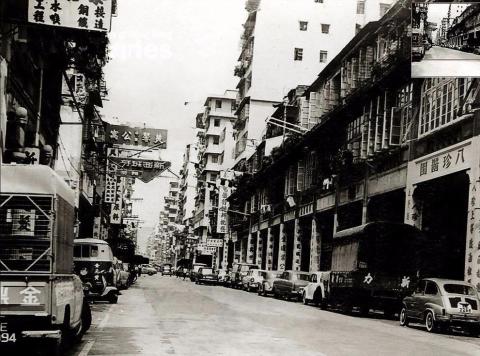
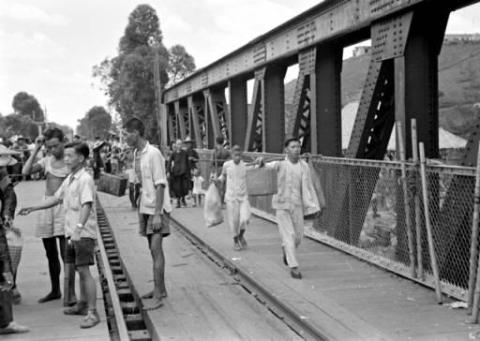
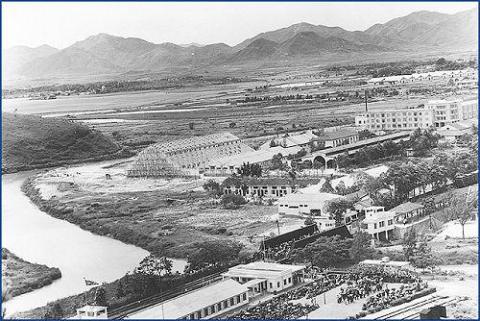
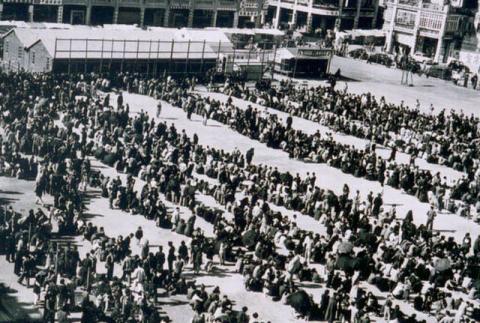
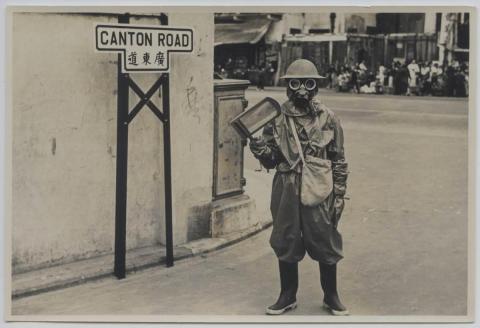
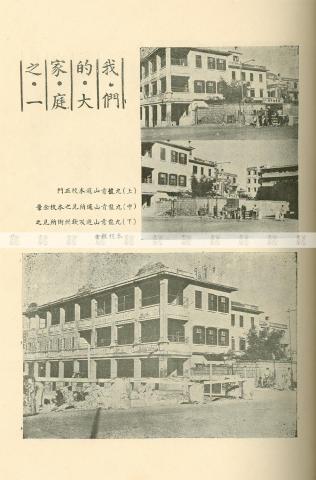

Comments
Thanks
Thank you so much for sharing these memories.
I really enjoyed reading your
I really enjoyed reading your memories of growing up in Kowloon/Hong Kong. I can identify with many of the personal events, experience and places you wrote since I myself also grew up in Kowloon in the mid 50's to early 60's. Those were the wonderful years and HK is no longer the same anymore. Thank you for sharing your memoirs and keep up the good work.
David L
Memories of our old Hong Kong
Thank you David L for your comments. Regards, Peter